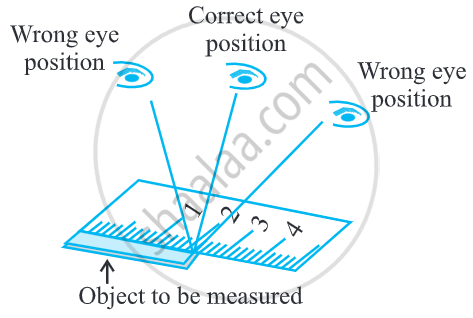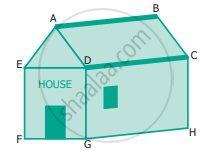Topics
Mathematics
Knowing Our Numbers
- Introduction to Knowing Our Numbers
- Comparing Numbers
- Compare Numbers in Ascending and Descending Order
- Compare Number by Forming Numbers from a Given Digits
- Compare Numbers by Shifting Digits
- Introducing a 5 Digit Number - 10,000
- Concept of Place Value
- Expansion Form of Numbers
- Introducing the Six Digit Number - 1,00,000
- Introducing seven-digit numbers
- Crores
- Using Commas in Indian and International Number System
- Round off and Estimation of Numbers
- To Estimate Sum Or Difference
- Estimating Products of Numbers
- Simplification of Expression by Using Brackets
- BODMAS - Rules for Simplifying an Expression
Whole Numbers
- Concept for Natural Numbers
- Concept for Whole Numbers
- Successor and Predecessor of Whole Number
- Operation of Whole Numbers on Number Line
- Properties of Whole Numbers
- Closure Property of Whole Number
- Associativity Property of Whole Numbers
- Division by Zero
- Commutativity Property of Whole Number
- Distributivity Property of Whole Numbers
- Identity of Addition and Multiplication of Whole Numbers
- Patterns in Whole Numbers
Playing with Numbers
- Arranging the Objects in Rows and Columns
- Factors and Multiples
- Concept of Perfect Number
- Concept of Prime Numbers
- Concept of Co-Prime Number
- Concept of Twin Prime Numbers
- Concept of Even and Odd Number
- Concept of Composite Number
- Eratosthenes’ method of finding prime numbers
- Tests for Divisibility of Numbers
- Divisibility by 10
- Divisibility by 5
- Divisibility by 2
- Divisibility by 3
- Divisibility by 6
- Divisibility by 4
- Divisibility by 8
- Divisibility by 9
- Divisibility by 11
- Common Factor
- Common Multiples
- Some More Divisibility Rules
- Prime Factorisation
- Highest Common Factor
- Lowest Common Multiple
Basic Geometrical Ideas
- Concept for Basic Geometrical Ideas (2 -d)
- Concept of Points
- Concept of Line
- Concept of Line Segment
- Concept of Ray
- Concept of Intersecting Lines
- Introduction to Parallel Lines
- Concept of Curves
- Different Types of Curves - Closed Curve, Open Curve, Simple Curve.
- Concept of Polygons
- Concept of Angle
- Concept of Triangles
- Concept of Quadrilaterals
- Concept of Circle
Understanding Elementary Shapes
- Introduction to Understanding Elementary Shapes
- Measuring Line Segments
- Right, Straight, and Complete Angle by Direction and Clock
- Concept of Angle
- Measuring Angles
- Perpendicular Line and Perpendicular Bisector
- Classification of Triangles (On the Basis of Sides, and of Angles)
- Classification of Triangles based on Sides- Equilateral, Isosceles, Scalene
- Classification of Triangles based on Angles: Acute-Angled, Right-Angled, Obtuse-Angled
- Types of Quadrilaterals
- Properties of a Square
- Properties of Rectangle
- Properties of a Parallelogram
- Properties of Rhombus
- Properties of Trapezium
- Three Dimensional Shapes
- Prism
- Concept of Pyramid
- Concept of Polygons
Integers
Fractions
Decimals
- The Decimal Number System
- Concept of Place Value
- Concept of Tenths, Hundredths and Thousandths in Decimal
- Representing Decimals on the Number Line
- Conversion between Decimal Fraction and Common Fraction
- Comparing Decimal Numbers
- Using Decimal Number as Units
- Addition of Decimal Fraction
- Subtraction of Decimal Fraction
Data Handling
Mensuration
Algebra
Ratio and Proportion
Symmetry
Practical Geometry
- Introduction to Geometric Tool
- Construction of a Circle When Its Radius is Known
- Construction of a Line Segment of a Given Length
- Constructing a Copy of a Given Line Segment
- Drawing a Perpendicular to a Line at a Point on the Line
- Drawing a perpendicular to a line from a point outside the line
- The Perpendicular Bisector
- Constructing an Angle of a Given Measure
- Construction of an angle bisector using a compass
- Concept of Angle Bisector
- Angles of Special Measures - 30°, 45°, 60°, 90°, and 120°
Notes
Measuring Line Segments:
-
A line segment corresponds to the shortest distance between two points. A line segment is a fixed portion of a line.
-
The distance between the endpoints of a line segment is its length.
-
Line segments can be measured by
i) Comparison by observation:
We can tell which line segment is greater than other just by observing the two line segments but it is not sure.
ii) Comparison by tracing:
This method depends upon the accuracy in tracing the line segment.In this method we have to trace one line on paper then put the traced line segment on the other line to check which one is greater.
But this is a difficult method because every time to measure the different size of line segments we have to make a separate line segment.

iii) Comparison using ruler and divider:
We can use a ruler to measure the length of a line segment. Put the zero mark at point A and then move toward l to measure the length of the line segment, but it may have some errors on the basis of the thickness of the ruler.
-
A graduated ruler and the divider are useful to compare lengths of line segments.

- Open the divider.
- Place the endpoint of one of its arms at A and the endpoint of the second arm at B.
- Taking care that the opening of the divider is not disturbed, lift the divider and place it on the ruler. Ensure that one endpoint is at the zero mark of the ruler.
- Now read the mark against the other endpoint.
-
Positioning error: To get the correct measure, the eye should be correctly positioned, just vertically above the mark. Otherwise, errors can happen due to angular viewing.





